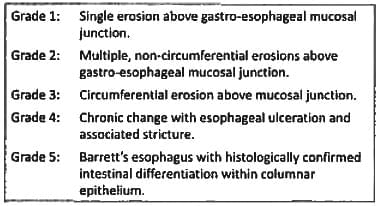Test: Bleeding from GIT & Diseases of Esophagus- 2 - NEET PG MCQ
15 Questions MCQ Test - Test: Bleeding from GIT & Diseases of Esophagus- 2
Most common complication of achalasia is: (Recent Pattern 2014-15)
The most common cause of drug induced esophagitis is (Recent Pattern 2014-15)
Investigation of choice for dysphagia lusoria is? (Recent Pattern 2014-15)
Zenker's diverticulum presents with: (Recent Pattern 2014-15)
Which is true regarding Barrett's esophagus? (Recent Pattern 2014-15)
Pseudoachalasia is seen with all except? (Recent Pattern 2014-15)
Non progressive dysphagia in a lady with a sensation of something stuck in the throat and worsened by intake of cold drinks is suggestive of? (Recent Pattern 2014-15)
Endoscopic mucosal resection in Barrett's esophagus results in: (Recent Pattern 2014-15)
Which of the following staging is used for GERD? (Recent Pattern 2014-15)
Reflux esophagitis is defined as pH of esophagus to be less than: (Recent Pattern 2014-15)
Most common site of tear in Boerhaave syndrome: (Recent Pattern 2014-15)
All of the following are correct statements regarding reflux esophagitis, except: (Recent Pattern 2014-15)
Most common site for iatrogenic rupture of esophagus: (Recent Pattern 2014-15)
All are true about Plummer-Vinson syndrome except: (Recent Pattern 2014-15)
True statement about a 6 cm Zenker's diverticulum ls:















